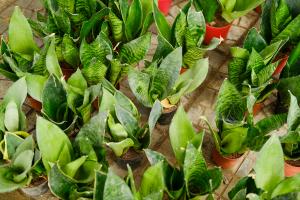How to Grow Rubber Tree Plant
Rubber tree plant, also known as Ficus elastica, is a popular houseplant that is easy to grow and care for. If you're looking for a beautiful indoor plant that can purify the air and add a touch of green to your home, the rubber tree plant is a great option.
Choosing the Right Spot
The first thing to consider when growing a rubber tree plant is the location. Rubber trees prefer bright, indirect light, so place them near a window that gets plenty of sunlight without exposing them to direct sun. Avoid placing them in areas with drafts or temperature fluctuations.
Preparing the Soil
When it comes to soil, rubber trees prefer moist, well-draining soil. A soil mix with peat moss, perlite, and vermiculite works well. Before planting your rubber tree, make sure the soil is loose and moist. If the soil feels dry, water it and let it drain before planting.
Planting the Rubber Tree
When it comes to planting the rubber tree, make sure to choose a container that is large enough to accommodate the plant's roots. Fill the bottom of the container with a layer of rocks or pebbles, then add the soil mix. Place the rubber tree in the container and cover the roots with soil, making sure to tamp down the soil to remove any air pockets.
Caring for Your Rubber Tree
Once your rubber tree is planted, it's important to care for it properly. Rubber trees prefer moist soil, so water them regularly, but be careful not to overwater them. Allow the soil to dry out slightly between watering. If the leaves start to droop or turn yellow, it may be a sign of overwatering.
Rubber trees also benefit from regular fertilization. You can use a general houseplant fertilizer once a month during the growing season to keep your rubber tree healthy and thriving.
Pruning Your Rubber Tree
Pruning your rubber tree is not necessary, but it can help promote growth and keep the plant's size under control. If your rubber tree is becoming too large, you can trim the branches back to encourage new growth. You can also cut back any dead or diseased branches to keep the plant healthy.
Propagating Your Rubber Tree
If you want to propagate your rubber tree, it's easy to do so by using stem cuttings. Cut a stem about 6 inches long and remove the leaves from the bottom half. Dip the cut end in rooting hormone and plant it in moist soil. Keep the soil moist and place the cutting in a bright, indirect light. In a few weeks, roots should start to grow, and you'll have a brand new rubber tree plant.
Conclusion
Growing a rubber tree plant is easy and rewarding. By choosing the right spot, preparing the soil, and caring for your plant properly, you can enjoy the beauty and benefits of a rubber tree in your home for many years to come.

 how many times do yo...
how many times do yo... how many planted tre...
how many planted tre... how many pine trees ...
how many pine trees ... how many pecan trees...
how many pecan trees... how many plants comp...
how many plants comp... how many plants can ...
how many plants can ... how many plants and ...
how many plants and ... how many pepper plan...
how many pepper plan...































